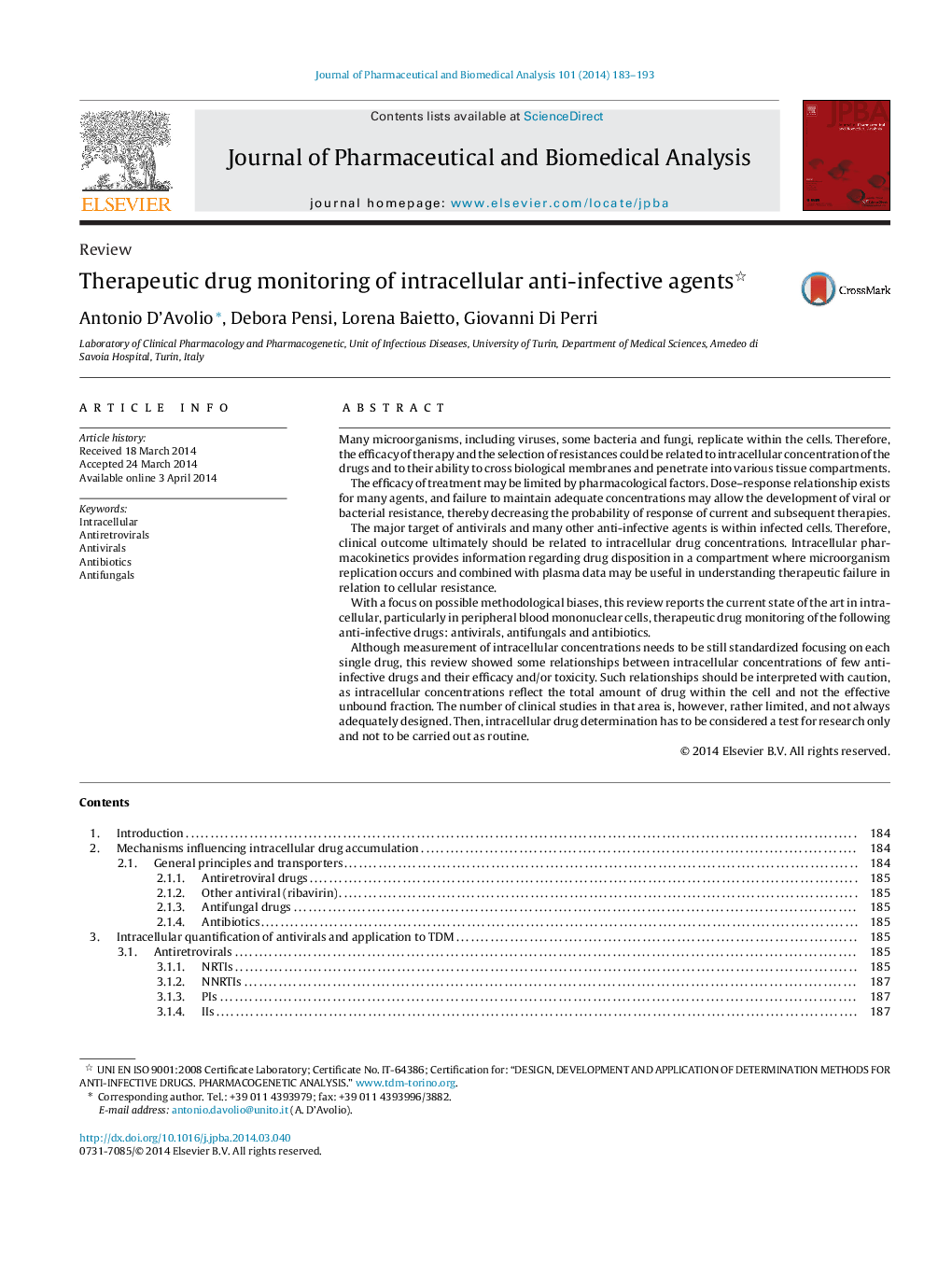| کد مقاله | کد نشریه | سال انتشار | مقاله انگلیسی | نسخه تمام متن |
|---|---|---|---|---|
| 1221403 | 1494634 | 2014 | 11 صفحه PDF | دانلود رایگان |
• Current state of the art in TDM of intracellular anti-infective drugs.
• Focus on possible methodological biases related to cell collections and counts.
• TDM of intracellular anti-infective agents and their correlation with clinical outcome.
Many microorganisms, including viruses, some bacteria and fungi, replicate within the cells. Therefore, the efficacy of therapy and the selection of resistances could be related to intracellular concentration of the drugs and to their ability to cross biological membranes and penetrate into various tissue compartments.The efficacy of treatment may be limited by pharmacological factors. Dose–response relationship exists for many agents, and failure to maintain adequate concentrations may allow the development of viral or bacterial resistance, thereby decreasing the probability of response of current and subsequent therapies.The major target of antivirals and many other anti-infective agents is within infected cells. Therefore, clinical outcome ultimately should be related to intracellular drug concentrations. Intracellular pharmacokinetics provides information regarding drug disposition in a compartment where microorganism replication occurs and combined with plasma data may be useful in understanding therapeutic failure in relation to cellular resistance.With a focus on possible methodological biases, this review reports the current state of the art in intracellular, particularly in peripheral blood mononuclear cells, therapeutic drug monitoring of the following anti-infective drugs: antivirals, antifungals and antibiotics.Although measurement of intracellular concentrations needs to be still standardized focusing on each single drug, this review showed some relationships between intracellular concentrations of few anti-infective drugs and their efficacy and/or toxicity. Such relationships should be interpreted with caution, as intracellular concentrations reflect the total amount of drug within the cell and not the effective unbound fraction. The number of clinical studies in that area is, however, rather limited, and not always adequately designed. Then, intracellular drug determination has to be considered a test for research only and not to be carried out as routine.
Figure optionsDownload as PowerPoint slide
Journal: Journal of Pharmaceutical and Biomedical Analysis - Volume 101, December 2014, Pages 183–193
